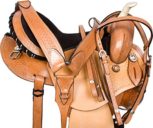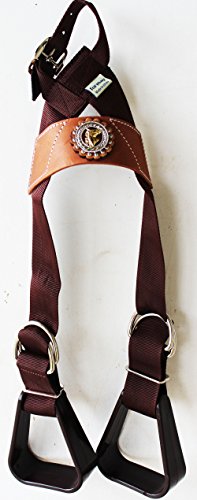Horse Talk: Supple riders are better riders – VVdailypress.com
[ad_1] Kathy Young | Victorville Daily Press The late Kip Rosenthal was a top hunter-jumper and equitation trainer who owned and ran Benchmark Farm in Wellington, Florida. She earned many national hunting and jumping titles as a junior and young adult competitor before launching a successful career as a trainer of junior riders. In an article in
[ad_1]
Kathy Young
| Victorville Daily Press
The late Kip Rosenthal was a top hunter-jumper and equitation trainer who owned and ran Benchmark Farm in Wellington, Florida. She earned many national hunting and jumping titles as a junior and young adult competitor before launching a successful career as a trainer of junior riders.
In an article in the Fall 2020 issue of Practical Horseman magazine, Rosenthal discussed the importance of eliminating stiffness in the saddle. Essentially, moving fluidly with the horse’s motion allows riders to communicate effectively.
Whether your discipline of choice is English or Western, many of the tips in the article will apply.
What makes riders stiff?
Most riders stiffen to alleviate bouncing. But anyone who has tried to sit a horse with a big trot knows that trying not to bounce is futile.
Stiffening your back, arms or hands will create often painful problems for your horse. He will react by attempting to avoid the pain: Hollowing his back, raising his head or doing what he can to protect the sensitive bars of his mouth.
Move with your horse
A supple rider moves with the horse. In fact, the only time a rider should be still is when the horse has halted. If you are still as you approach a fence, the horse may stop altogether because you are not communicating your wishes.
Breathe away stiffness
As Rosenthal says, if you’re talking, you’re breathing, so she recommends counting exercises (up to 100 and down again by twos, or up and down by fives, for example).
Keeping your mind on the math will help you relax, and the horse will relax, as well. Singing also helps, and breathing also keeps the blood flowing so your brain is functioning.
Exercises for stiff arms
Rosenthal directs the rider to put her arms on the horse’s neck, just in front of the saddle, and then post the trot. With the raising and lowering of the body, the hands stay put, but the elbows open and close to allow for the body movement. Eventually, the rider can move her hands back to their normal position off the neck.
Endless reins
This exercise works best with a quiet horse.
To loosen your hands and arms, while teaching you more about using your legs, Rosenthal recommends getting a thick white cord — a bit thicker than laundry line — about the length of your reins, plus another 8 to 10 inches to accommodate a knot. Loop one end of the cord through the bit rings, running it under your horse’s chin, and then tie a knot in the end of the cord.
Let your leather reins rest on the horse’s neck and pick up the cord, walking your horse around the arena.
You’ll learn how difficult it is to steer the horse using just the cord alone because it slips through the bit rings very easily, and the stiffer you are in the saddle, the more you will find yourself losing control with your other hand.
Turning properly is accomplished by use of the legs and hands because your outside hand — not the one doing the turning — must not be pulled forward.
Three positions of jumping
Light two-point position means the rider balances on her legs (the “two points”) but keeps the crotch lightly on the pommel. Light three-point position occurs when riders open their hip angle slightly with weight deeper in the saddle. Full three-point position is used when the horse is balking at a jump or is trying to run off with you.
Practicing moving in and out of these positions as you canter around the arena — similar to a hunter-jumper rider preparing the circle before riding the course. If you can cycle through these positions fluidly, says Rosenthal, you are probably not stiff. Try it without stirrups and also talk your way through your changes in position.
For more information on this article, visit practicalhorsemanmag.com and search “Kip Rosenthal.” The full article and many others are available for free.
Let’s block ads! (Why?)
[ad_2]
Source link






Comments
Comments are disabled for this post.